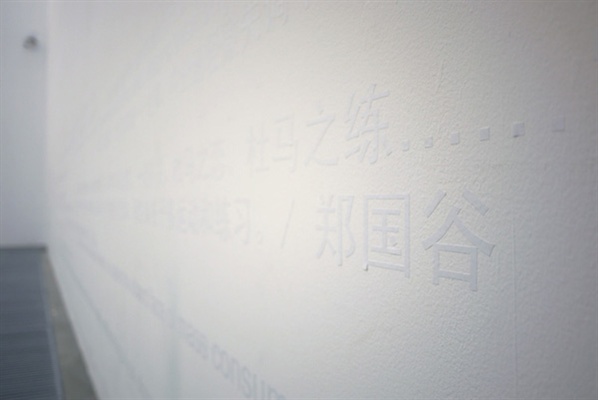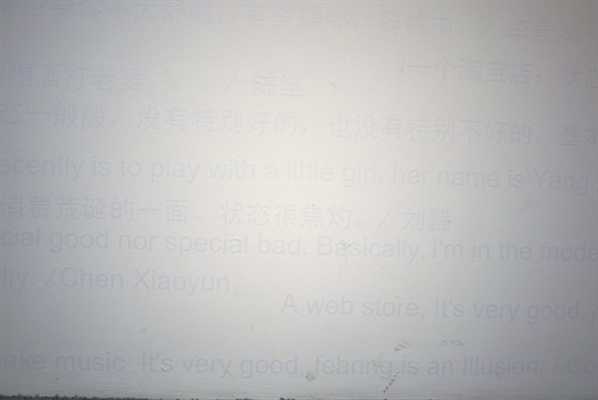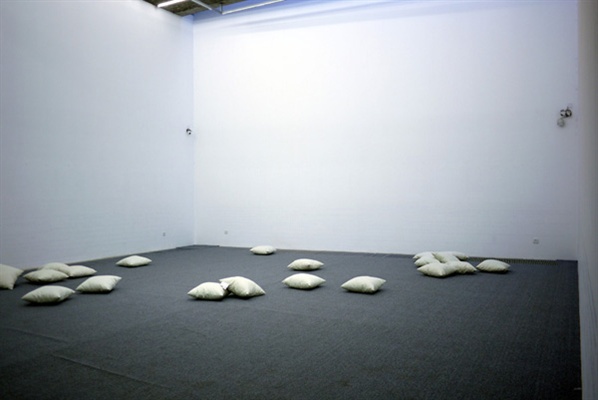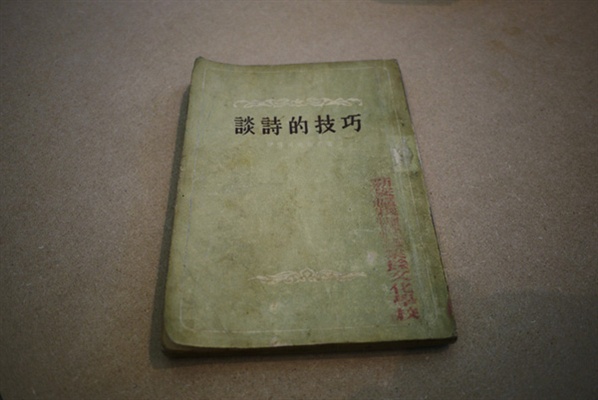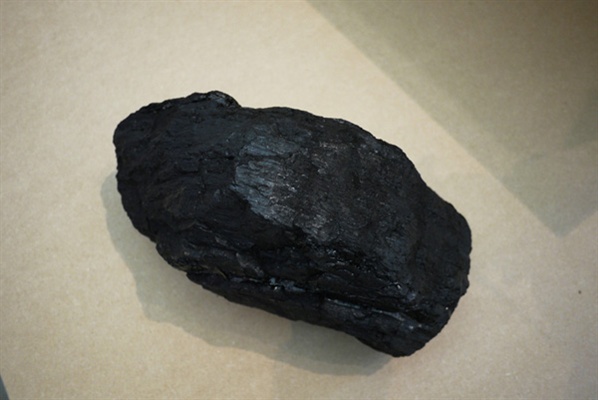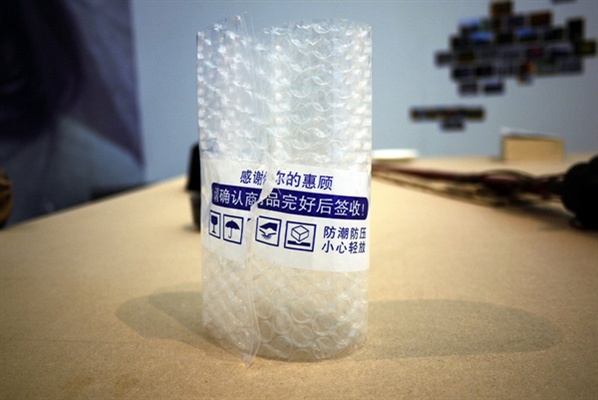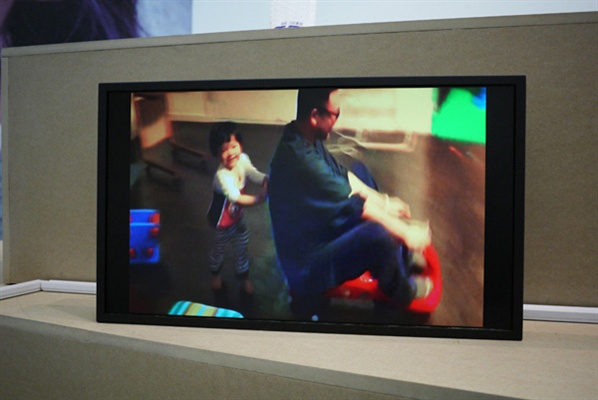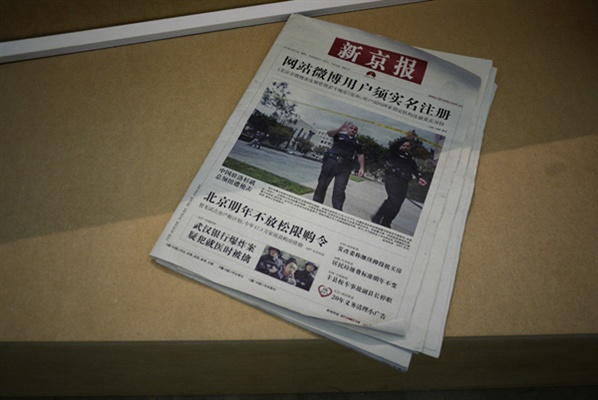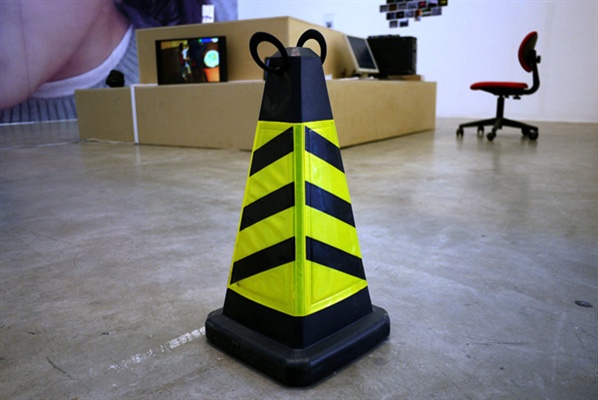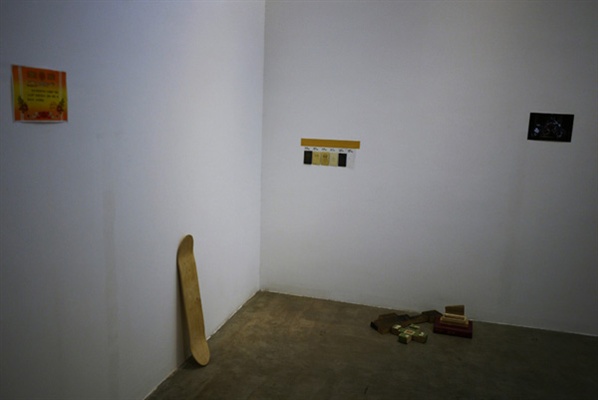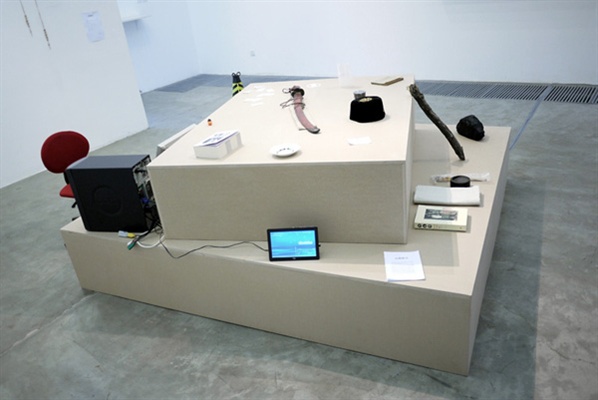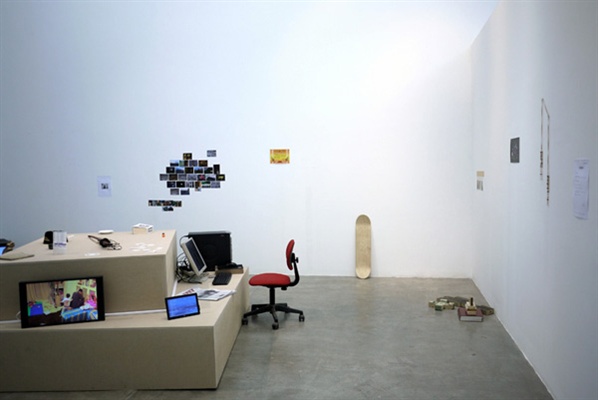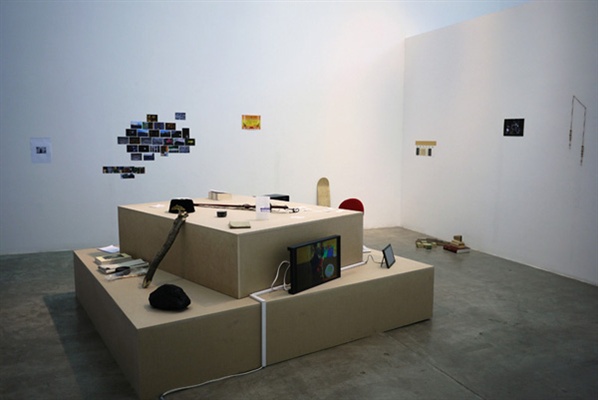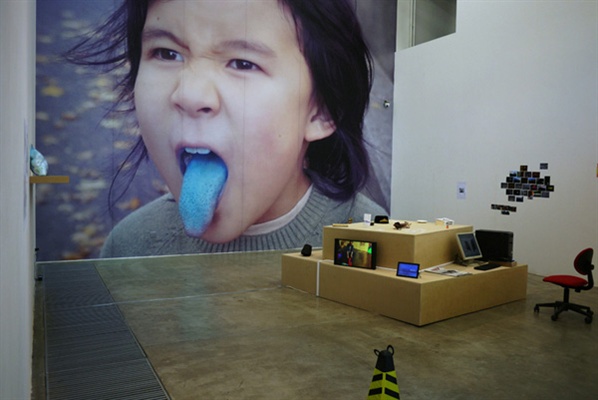Artist creation which centers on artwork and exhibitions which center on showcasing artworks, the mutual influence between these two has constituted the core knowledge of the art system that we know. Of course this deserves to be questioned. As curators or art institutes, they face all kinds of exhibitions year after year, hesitating, thinking and working; as artists, they face exhibitions with their works. Exhibition has become a thing that all roles need to face but all of them have different understandings. When we visit an exhibition, what are we expecting to see? Why do we decide to pay attention to one exhibition while ignoring another? Do the names of participating artists in an exhibition give us more space of imagination or does an institute give us more expectation? Before those exhibitions, haven’t we drawn a picture out of our own imagination for those unseen artworks owing to some element between the participating artists and the institute? As a segment inside art system (if this system exists), exhibition has gradually transformed from a means to a purpose under the pressure of both economy and the demand for innovation of thought in reality. Art creation has encountered similar things. Today, the indistinct homogeneity in countless exhibitions has raised an urgent question to the work of an art institute: how do we prevent the vanishing of uniqueness and heterogeneity?
Does an exhibition have to showcase artworks? The presentation of a work seems to symbolize the end of a period of thinking done by the artist. Then is “artist” a name of continuity or a name of gradation? The current trend is that almost in all the interviews, the artists declare the self-sufficiency of the works after they are finished. The problem is, when artists draw a line between their old works and themselves, what kind of status do they possess to face the present? When they are not making artworks, what are they? Does the name “artist” only mean kidnapping the relationship between the work and the creator?
Along with the gradual fading of people’s passion for the forms of contemporary artworks, what is behind the so-called “art creation” attracts more attention. A person’s talent can of course prove the wisdom in his work; mediocrity can also be shown in an artist’s attention to his creation. Driven by the audience’s gradually accumulated experience of visiting exhibitions and admiring artworks, or in other words, when exhibition becomes an activity without secret, this fake archeology or philology that collects proofs so as to be self-evident has gradually evolved into a kind of exhibition rhetoric. And this kind of narration with a story-telling quality has just filled up people’s deficiency in understanding this poor and unitary thing-exhibition. However, we do not need to worry about the right of authorship of all the works in this “exhibition”, which frees the narration from aiming at the excavation of an individual artist, so that it satisfies the public’s need for an imaginative image of a capitalized “artist”. In a typical exhibition space, all the participants, including curators and artists, will face this “exhibition” together despite of their different roles and identities.
EXHIBITION
2011.12.17 - 2012.02.17
Artist(s):Ai Weiwei, Cai Dongdong, Cao Fei, Chen Xiaoyun, Chen Wei, Chinnery Colin, Chu Yun, Ge Lei, Hu Xiangqian, Jiang Zhi, Jin Shan, Li Jinghu, Li Ming, Liang Yuanwei, Liu Chuang, Liu Wei, Ma Qiusha, MadeIn , Shi Qing, Song Dong, Sun Yuan + Peng Yu , Wang Wei, Wang Yuyang, Wang Sishun, Wang Jianwei, Xu Tan, Xu Qu, Yan Bing, Yang Zhenzhong, Yang Xinguang, Zhang Ding, Zhang Jiaping, Zhang Peili, Zhao Yao,
Curator(s):Tang Xin, Su Wenxiang, Xu Chongbao
2017
- Light Pavilion Project / Ce. Zhenhao: Fong Fo Film Studio
- Drawing Pogo
- Light Pavilion Project / Jiu Jiu: Fantastic Grounds - Tomorrow
- Light Pavilion Project / Good Painting
- Portrait Hot: Taikang Photography Collection
2016
- Taikang New Generation Curator Program / Toward the Emergence of Resistance
- Light Pavilion Project / Liu Zhangbolong: La Gaya Scienza
- Centennial Presents in Return: Exhibition of Alumni Donation from Chen Dongsheng and Li Yifei
- Light Pavilion Project / Wang Tuo: A Little Violence of Organized Forgetting
- Light Pavilion Project / Yang Guangnan: Dyspepsia
- LOVE-ADDICT
- The Weight of Spirit: Selection of Taikang Collection 2016
- Ghost in Flash: After Photography
- Light Pavilion Project / Hu Qingtai: Two Parts
- Light Pavilion Project / Liang Ban: Slightly Concussed
- Light Pavilion Project / Hao Jingban: Over-romanticism
- Bio-archiving: Underground Music in Shenyang 1995-2002
2015
- POLIT-SHEER-FORM MEETING: THE 10th ANNIVERSARY OF POLIT-SHEER-FORM
- Norman Bethune: Coevolution of Hero and Photography
- Back Home, Run Away: A Sample of Artistic Geography
- Fusion: Chinese Modern and Contemporary Art since 1930s
- At China: Early Photography And Photographic Techniques
2014
- THE FIRST DAWN
- LOVE STORY
- SLOW SHUTTER
- Xu Qu: Tennis Court
- Poppy: Zhang Hai'er Photography
- Pull Left: Not Always Right
- You Are Damn Wrong
- Transience: Intractable Objects
2013
- Jia Xiaoding: ENDLESS
- From Fuxingmen to Caochangdi: Taikang Space 2003—
- Wang Zhenfei: CONTROL
- Liu Xinyi: EXCITATION WAVES
- Groundwork Community
- Pessimism or Resistance?
2012
- Rural North China 1947-1948
- Cai Dongdong: PULLING TO THE LEFT
- Sunset Vacuum Plug
- Gao Weigang: SUPERSTITION
- Painting: Jin Shangyi & Zhang Shujian
- La Chambre Claire
2011
- Three Openings of Xiangqian Art Museum
- EXHIBITION
- Holy Land of Revolution & Legends of Shanghai: 4th Retrospective Photography Exhibition of Wu Yinxian
- IMAGE·HISTORY·EXISTENCE——TAIKANG LIFE 15th ANNIVERSARY ART COLLECTION EXHIBITION
- Present Continuous Past(s)
- Valiant & Heroic Peripateticism: 3rd Retrospective Photography Exhibition of Wu Yinxian
- 51㎡:16 Emerging Chinese Artists
2010
- 51㎡: No.16 Wang Yuyang
- 51㎡: No.15 Liang Yuanwei
- 51㎡: No.14 Yan Bing
- Genuine Colors & Images•All Sorts of Flowers Are in Bloom: 2nd Retrospective Photography Exhibition of Wu Yinxian
- 51㎡: No.13 Liu Chuang
- 51㎡: No.12 Ma Qiusha
- 51㎡: No.11 Xu Qu
- 51㎡: No.10 Lu Zhengyuan
- 51㎡: No.9 Pei Li
- 51㎡: No.8 Xin Yunpeng
- 51㎡: No.7 Hu Xiangqian
- 51㎡: No.6 Cai Weidong
- 51㎡: No.5 Li Mu
- In Between: Han Lei Photography Exhibition
- 51㎡: No.4 Wang Sishun
2009
- 51㎡:3# Zhao Yao
- 51㎡:2# Su Wenxiang
- Beijing Hotel and the Great Hall of the People: 1st Retrospective Photography Exhibition of Wu Yinxian
- 51㎡:1# Zhao Zhao
- Subjective Images
- Luo Yang
2008
- Lost Fuchun Mountain: Shu Hao Solo Exhibition
- Peppermint: Drawings by Yan Cong
- Spirit | Life: Jiang Jianjun’s Aesthetic Narrative
- Good Times: Chen Hongbo Solo Exhibition
- Chen Weiqun: Photo-Chromato
2007
- One Work: Propitiation of Liu Wei + Chen Haoyu
- Illusion–Running Away: Shu Hao’s Exhibition
- Box Space, Space Box: Ma Qiusha’s Photographs
- TIME LAPSE
- Mirage: Sun Hongbin Solo Exhibition
- Beautiful Plan: Han Yajuan Solo Exhibition

